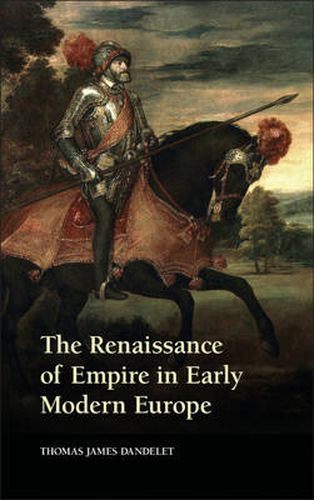Readings Newsletter
Become a Readings Member to make your shopping experience even easier.
Sign in or sign up for free!
You’re not far away from qualifying for FREE standard shipping within Australia
You’ve qualified for FREE standard shipping within Australia
The cart is loading…






This book brings together a bold revision of the traditional view of the Renaissance with a new comparative synthesis of global empires in early modern Europe. It examines the rise of a virulent form of Renaissance scholarship, art, and architecture that had as its aim the revival of the cultural and political grandeur of the Roman Empire in Western Europe. Imperial humanism, a distinct form of humanism, emerged in the earliest stages of the Italian Renaissance as figures such as Petrarch, Guarino, and Biondo sought to revive and advance the example of the Caesars and their empire. Originating in the courts of Ferrara, Mantua, and Rome, this movement also revived ancient imperial iconography in painting and sculpture, as well as Vitruvian architecture. While the Italian princes never realized their dream of political power equal to the ancient emperors, the Imperial Renaissance they set in motion reached its full realization in the global empires of sixteenth- and seventeenth-century Spain, France, and Great Britain.
$9.00 standard shipping within Australia
FREE standard shipping within Australia for orders over $100.00
Express & International shipping calculated at checkout
This book brings together a bold revision of the traditional view of the Renaissance with a new comparative synthesis of global empires in early modern Europe. It examines the rise of a virulent form of Renaissance scholarship, art, and architecture that had as its aim the revival of the cultural and political grandeur of the Roman Empire in Western Europe. Imperial humanism, a distinct form of humanism, emerged in the earliest stages of the Italian Renaissance as figures such as Petrarch, Guarino, and Biondo sought to revive and advance the example of the Caesars and their empire. Originating in the courts of Ferrara, Mantua, and Rome, this movement also revived ancient imperial iconography in painting and sculpture, as well as Vitruvian architecture. While the Italian princes never realized their dream of political power equal to the ancient emperors, the Imperial Renaissance they set in motion reached its full realization in the global empires of sixteenth- and seventeenth-century Spain, France, and Great Britain.